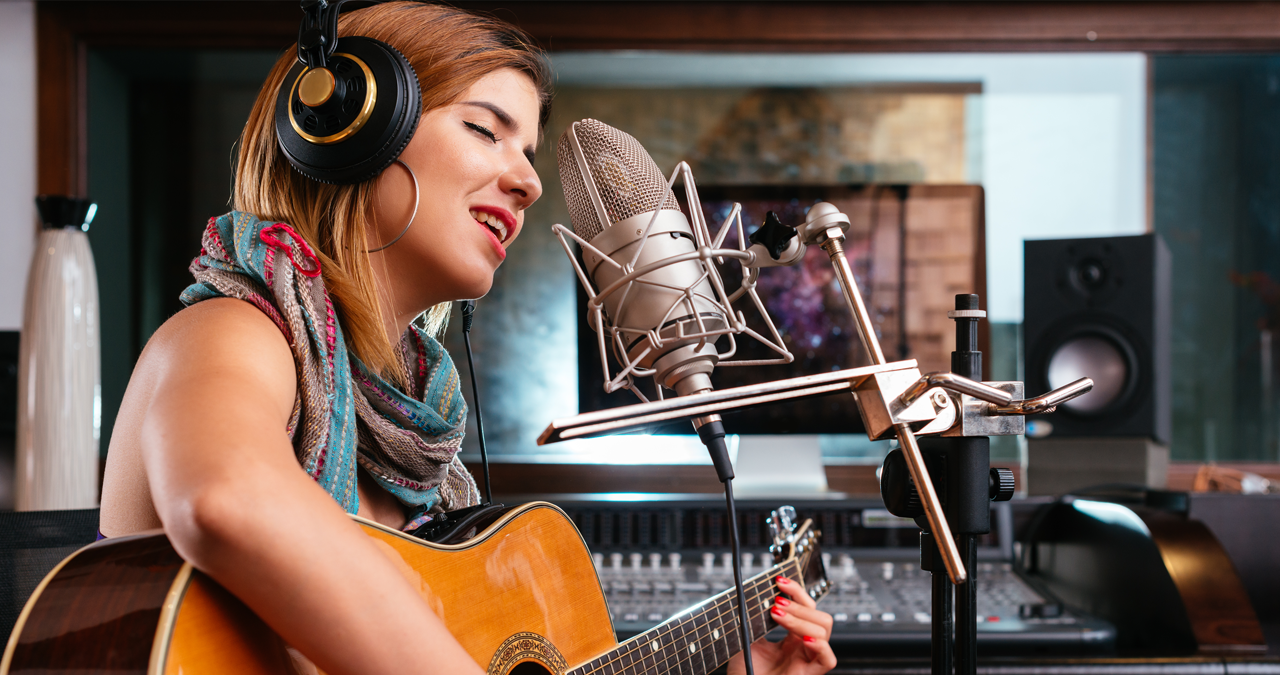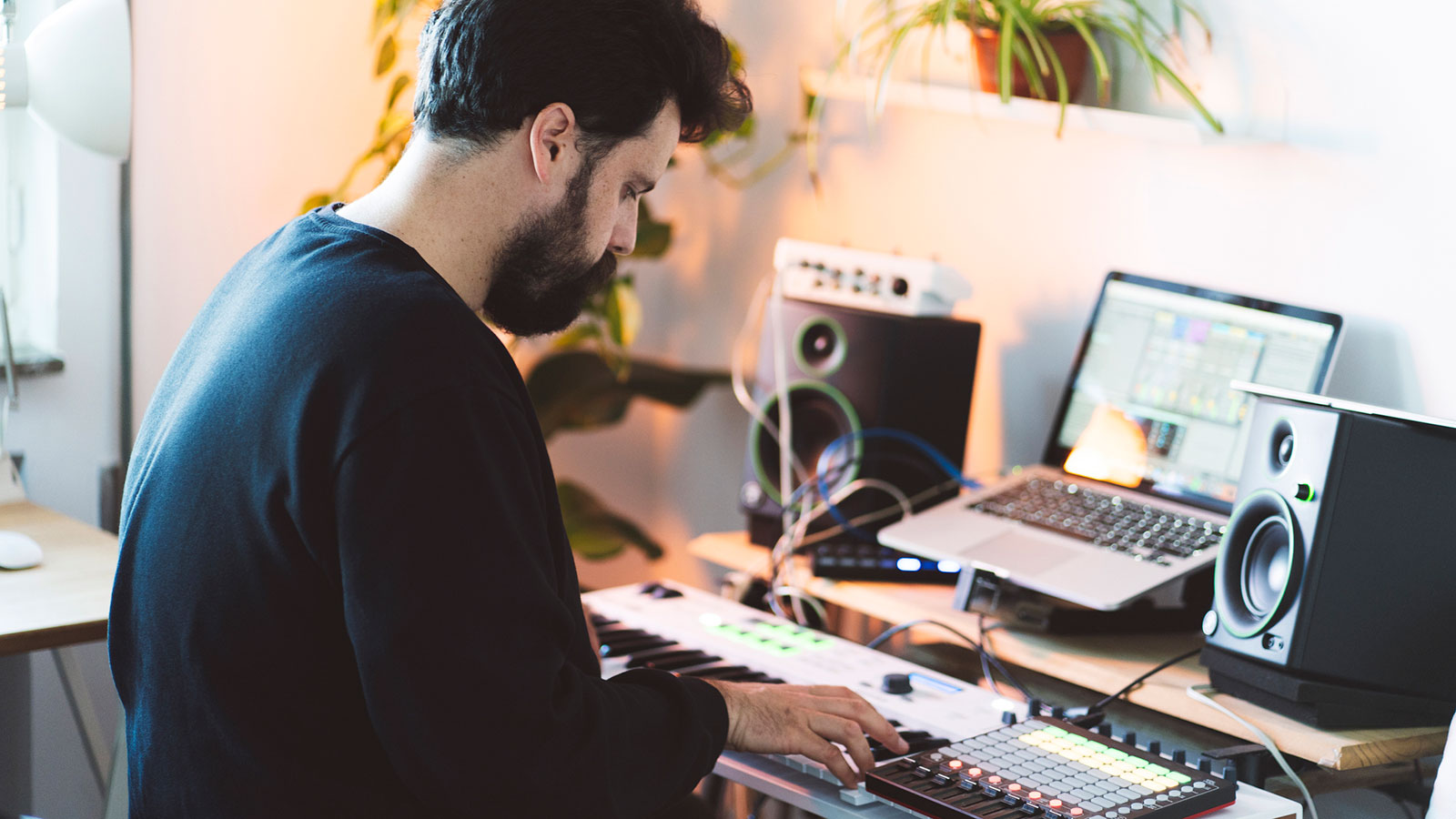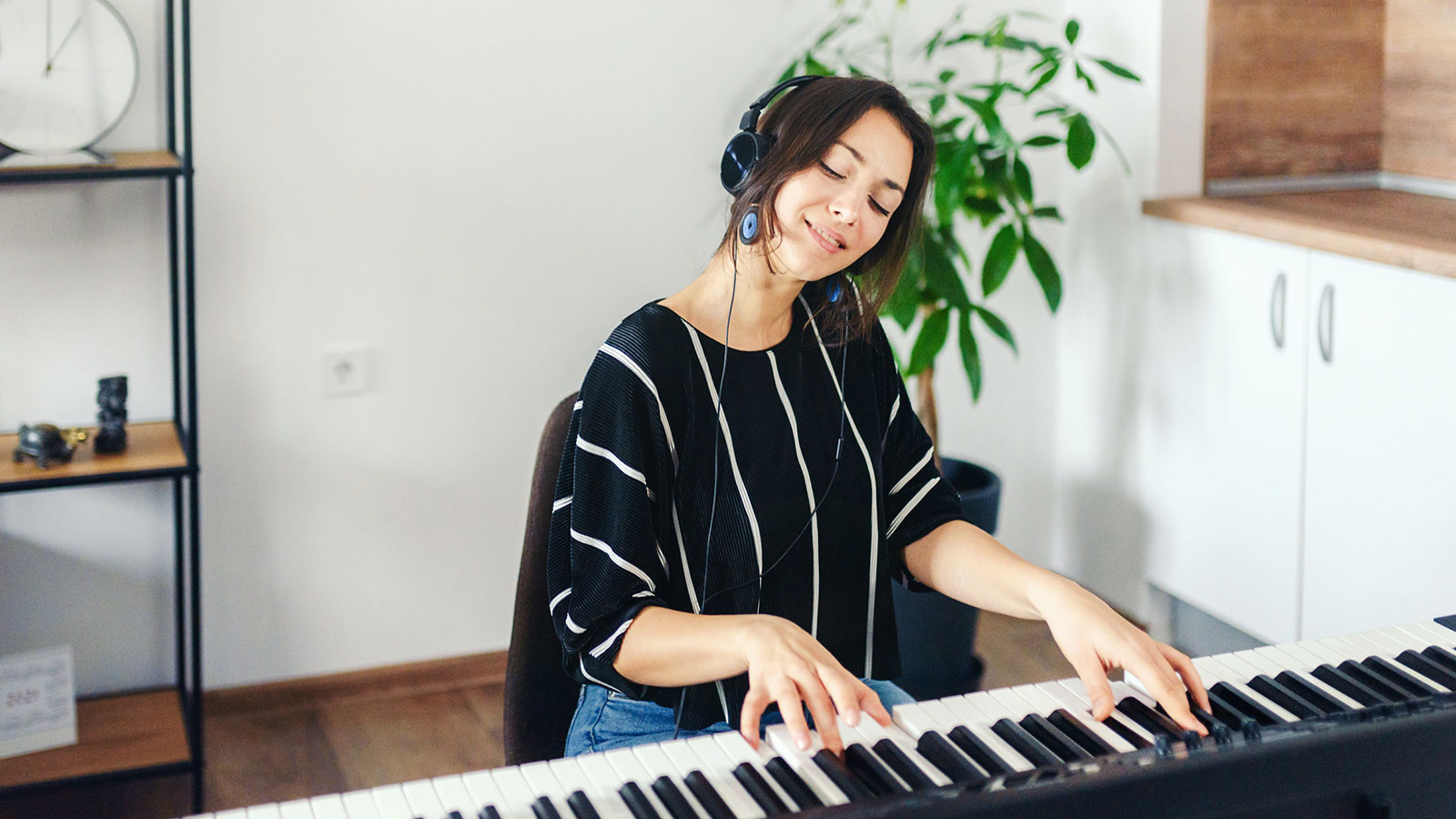“The best placement for a vocal mic is actually slightly above your vocalist, as it forces them to tilt their head back slightly”: 25 recording tips and tricks everyone should know
Get better takes in the studio and on the stage, with our essential advice for producers and DIY music-makers

- 1. Get mic'd
- 2. Go live
- 3. Two mics, one guitar
- 4. Put down a marker
- 5. Keep your distance
- 6. Be prepared for inspiration
- 7. Balance before buttons
- 8. Put the listener in the room
- 9. Move the mic
- 10. Keep acoustic mics at 35-45cm
- 11. Try new styles
- 12. 'Verb the vocalists
- 13. Double mic pianos
- 14. Amp your electric piano
- 15. Bend time
- 16. Listen for natural reverb
- 17. DIY vocal booth
- 18. Use closed-back headphones
- 19. Add in ad-libs
- 20. Mic from above
- 21. Keep them off the booze
- 22. Look out for latency
- 23. Become a vocal coach
- 24. Record everything
- 25. Rattle and hum
RECORDING WEEK 2025: These days, it’s perfectly possible to create the majority of your sounds inside your computer, but if you never bother to capture any real-world audio, you and your music will be missing out.
With this in mind, MusicRadar has amassed 25 timeworn tips for anyone who has an interest in live or studio recording.
1. Get mic'd
Buy yourself at least one decent condenser and one decent dynamic mic as soon as you can. As long as you don’t juggle with them, they’ll last you for years and open up a whole world of fun. Music production is largely about recording stuff - don’t lose sight of that.
2. Go live
Don’t dismiss live recording. With so many samples readily available, it’s very easy to overlook it, but you must try it a few times, as it teaches incredibly useful skills and highlights a lot of principles computer musicians often ignore, such as phasing issues and other mixdown-stage problems. Oh, and it’s fun!
3. Two mics, one guitar

When recording guitars, try using two mics placed centrally but pointing at opposite ends of the instrument. They’ll produce tonally different sounds that can then be panned later for a great stereo effect.
4. Put down a marker
If your musician is swinging their instrument around too much it will affect the sonic quality, no matter how much compression is applied, so it’s sometimes worth hanging a marker or dummy mic and asking the player to keep their instrument level with it.
5. Keep your distance
Live recording and studio recording require different approaches. Live recording is all about close-miking to avoid noise bleed, but this almost always sounds worse than a mic placed a comfortable distance away, so don’t be tempted to close mic in the studio…
Want all the hottest music and gear news, reviews, deals, features and more, direct to your inbox? Sign up here.

6. Be prepared for inspiration
Create a recording template project in your DAW that is pre-set to your typical recording preferences. With that done, whether you’re a musician, DJ or just an engineer for others, you’ll always be poised to start recording any flashes of inspiration.
7. Balance before buttons
When recording a group of musicians with one mic (a brass section, say), the key is to create the right dynamic balance before you hit the record button. Try placing your players about three metres from the mic and pointing it down at them slightly, so as to capture reflections from the floor.
8. Put the listener in the room
Essential to the successful recording of acoustic instruments is creating the illusion of being in the room. Your ultimate goal is to make it sound like it would to your ears in real life. That is what makes it such a challenge - the whole art is in making up for the fact that no microphone captures sound like our ears do.
9. Move the mic
If you find mechanical noise is clouding a recording (saxophone keys clicking, for example), try placing the mic behind the player or to the side, so that it's partially shielded from the offending cacophony.
10. Keep acoustic mics at 35-45cm
The ideal distance for an acoustic guitar mic is around 35-45cm away from the soundhole. Place it any closer and your sound will be overly boxy - much further away and you´ll pick up too much of the room´s ambience.
11. Try new styles
Get your musician to try playing in a number of styles (eg, picked and fingered for a guitarist). You never know which might sound better, and you then have layering options for mixdown and different versions for your arrangement stage.
12. 'Verb the vocalists

If your vocalist is struggling to hit the notes, try washing their monitoring signal with a lot of long reverb. They’ll then be able to use the reverb on their voice to better detect their own pitch, making it much easier for them to make adjustments.
13. Double mic pianos
A handy tip for school music teachers: the best way to record an upright piano is with two condenser mics behind, placed left and right and pointing slightly down, with the top and back of the piano removed. If you can’t remove the back, open the top and place the mics left and right, about two feet above.
14. Amp your electric piano

If you’re using a classic electric piano riff, try recording it using an amp or amp modelling plug-in for that authentic live stage sound.
15. Bend time
Struggling with the performance of a riff? Thanks to timestretching, you can play it slower and more accurately, then ramp it up to the right speed later. It’s not cheating if nobody knows and it sounds great!
16. Listen for natural reverb
Does your building have an interesting-sounding hallway or other acoustic space? A really bright-sounding bathroom, perhaps? Put a microphone in there, play your track back and record the room’s natural reverb, ready to mix in.
17. DIY vocal booth
For decent vocal recordings, create a small area packed with duvets and blankets - a wardrobe is ideal. Of course, you need to ensure that you have enough light to read the lyrics and enough space to be able to stand a decent distance from the microphone.
18. Use closed-back headphones
It sounds incredibly obvious but when you’re recording an instrument or voice, make sure that the backing track only plays through well-isolated closed-back earphones with minimal noise-bleed, so as to record a clean signal.
19. Add in ad-libs
Always get loads of ad-libs from your vocalist, and make sure they try singing sections of verses and choruses in separate takes, holding notes so that the tail of one vocal section can be laid out to overlap the start of the next. This can create a really energetic effect.
20. Mic from above

The best placement for a vocal mic is actually slightly above your vocalist, as it forces them to tilt their head back slightly, thus opening up their throat for clear and strong voice projection.
21. Keep them off the booze
Whatever you do, don’t let your vocalist get drunk or worse. There might be a few rare musicians out there who do a better job after they’ve had a few beers, but they are a very small minority, and this is especially true for vocalists… whatever they might tell you!
22. Look out for latency
Recording guitars can be a tricky business because of latency issues in some setups. If you like to monitor with effects, but want to record a clean signal, then you need to use a unit that enables you to output the dry signal alongside the effected version.
An alternative solution is to get hold of a small analogue mixer/splitter and send the signal to your effects unit and the computer simultaneously.
23. Become a vocal coach
If your vocalist just isn’t hitting the right notes, try doing a little DIY vocal coaching. For example, if they’re singing flat, ask them to sing a little sharp. And if they can’t do that, try temporarily tuning the backing track up a few cents (singers tend to be around 10-20 cents sharp or flat) to force them to compensate.
24. Record everything
We’ve already told you to make yourself a recording template, but that’s no good if you don’t use it. You should get into the habit of leaving something recording every time you play an audio instrument, mix, sing or otherwise jam. Then just delete it if you haven’t done anything worth keeping.
25. Rattle and hum
If you’re recording with sensitive microphones, make sure your players aren’t wearing anything that might rattle or bash against their instruments. There’s nothing more annoying than the sound of a watch, button or jangling chain ruining that one perfect take and remaining undiscovered until after the musicians have gone home!
MusicRadar is the internet's most popular website for music-makers of all kinds, be they guitarists, drummers, keyboard players, DJs or producers.
GEAR: We help musicians find the best gear with top-ranking gear round-ups and high-quality, authoritative reviews by a wide team of highly experienced experts.
TIPS: We also provide tuition, from bite-sized tips to advanced work-outs and guidance from recognised musicians and stars.
STARS: We talk to artists and musicians about their creative processes, digging deep into the nuts and bolts of their gear and technique. We give fans an insight into the actual craft of music-making that no other music website can.
You must confirm your public display name before commenting
Please logout and then login again, you will then be prompted to enter your display name.
